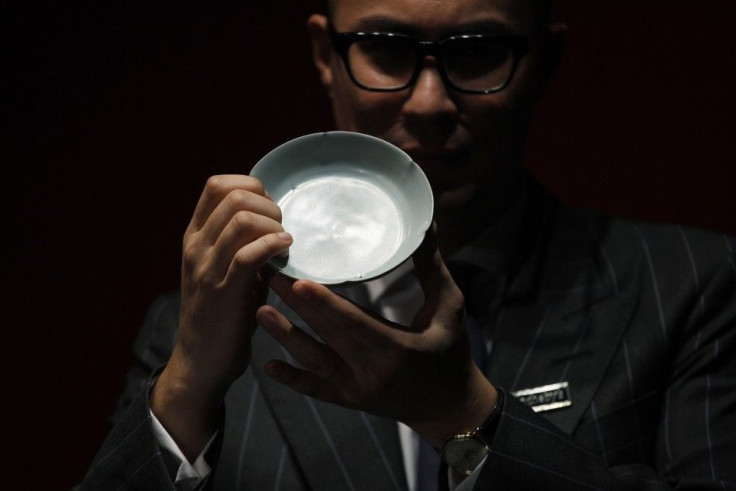Record-Breaking Bowl Shines at Sotheby's Asia Sales

An unidentified buyer smashed the world auction record for Chinese Song dynasty ceramics after a bidding war for a 900-year-old bowl on the final day of Asian spring sales for global auction powerhouse Sotheby's.
The five days of sales of wine, jewellery, Asian and Chinese art, ceramics and watches raised nearly HK$2.5 billion ($316 million) overall, above estimates but paling against previous sales on tempered demand for certain lots as collectors became more selective.
The sales are a closely watched biannual barometer of emerging market demand in China and Asia for some of the world's most expensive artwork and luxury goods, with voracious Chinese buying turning Hong Kong into a global auction hub.
While the total take outstripped pre-sale forecasts of some HK$1.9 billion, and with 87.9 percent of more than 3,000 lots sold, it fell short of tallies for biannual sales last year as auctioneers increasingly lean toward the top-tier lots at the cost of lesser works amid challenging economic conditions.
One of the highlights came on Wednesday with the sale of the flower-shaped Northern Song ceramic, a pale colored bowl that went for HK$207.86 million ($26.65 million) after a 15 minute bidding war, triple its pre-sale estimate and setting the auction record for Song ceramics.
The previous record holder was a vase that went for HK$67.5 million ($8.6 million) four years ago.
Auctioneers said the shallow bowl, also known as a washer, was made exclusively for a Chinese emperor who could have used it to wash his calligraphy brushes.
This kiln was in production for only 20, 30 years and made the most refined wares ever produced, said Nicholas Chow, Sotheby's Asia Deputy Chairman and International Head of Chinese Ceramics and Works of Art.
It's very understated, it's very simple aesthetic ... reflects ideas of humility, modesty that were prevalent at the time with neo-Confucianism.
But results were harsher for broader Chinese ceramics and works of art, which sold only 52.5 percent of its lots.
Even noted collections suffered. The third sale of the Meiyintang Collection, a respected assemblage of Chinese porcelain collected over nearly half a century by Swiss tycoons, saw a quarter of its lots unsold.
Increasingly selective collectors of contemporary artworks vied for the feted masterpieces while a string of recent works by younger artists struggled for the spotlight.
This yielded lukewarm results for 20th Century and Contemporary Asian art sales, which saw 9.3 percent and 25 percent of lots unsold.
Demand for Modern and Contemporary Southeast Asian Paintings was also muted with 20 percent of the lots remaining at a half-full auction room.
Prominent artists fared relatively well.
Zhang Xiaogang's 43.25 inch tall oil on canvas, Bloodline - Big Family: Family No 2, featuring his signature tinted faces and portraiture reminiscent of family photos from the Cultural Revolution, scooped the record price of HK$52.18 million for the various-owner Contemporary Asian Art sale.
But a later work in his Bloodline series auctioned at below estimates.
Buyers are becoming more rational, and the market is becoming more selective, with a focus on top quality work, said Evelyn Lin, Sotheby's Head of Contemporary Asian Art.
Appetite for classical artworks remained relatively firm as fine Chinese paintings scooped more than double the pre-sales estimate at some HK$468 million, selling 92.7 percent of lots.
Sotheby's said that, at its jewellery sale, an 8.01 carat emerald-cut blue diamond and diamond ring fetching HK$99.22 million was the second highest price per carat for a blue diamond at auction.
But overall, jewels saw an unsold rate of 22 percent.
© Copyright Thomson Reuters 2024. All rights reserved.











